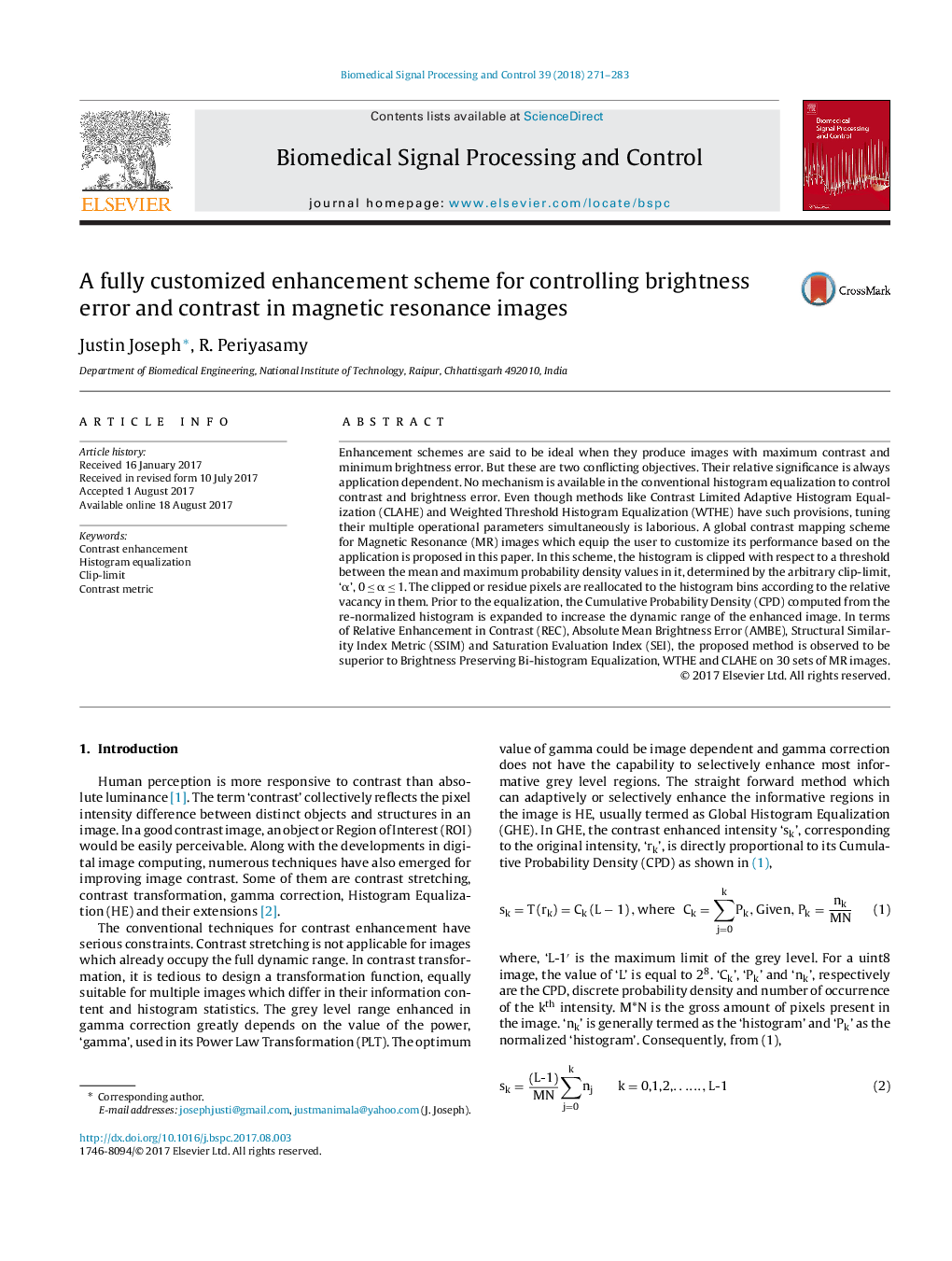| Article ID | Journal | Published Year | Pages | File Type |
|---|---|---|---|---|
| 4973485 | Biomedical Signal Processing and Control | 2018 | 13 Pages |
â¢A global contrast mapping scheme for Magnetic Resonance images.â¢Fine control over the degree of enhancement and brightness error through a single operational parameter.â¢The scheme can be customized more flexibily and easily specific to application.â¢The method eliminates offset intensity artefacts without disturbing natural histogram statistics and degrading image features.â¢It follows a global equalization procedure and computationally more simple than the local enhancement techniques.
Enhancement schemes are said to be ideal when they produce images with maximum contrast and minimum brightness error. But these are two conflicting objectives. Their relative significance is always application dependent. No mechanism is available in the conventional histogram equalization to control contrast and brightness error. Even though methods like Contrast Limited Adaptive Histogram Equalization (CLAHE) and Weighted Threshold Histogram Equalization (WTHE) have such provisions, tuning their multiple operational parameters simultaneously is laborious. A global contrast mapping scheme for Magnetic Resonance (MR) images which equip the user to customize its performance based on the application is proposed in this paper. In this scheme, the histogram is clipped with respect to a threshold between the mean and maximum probability density values in it, determined by the arbitrary clip-limit, 'α', 0 â¤Â α â¤Â 1. The clipped or residue pixels are reallocated to the histogram bins according to the relative vacancy in them. Prior to the equalization, the Cumulative Probability Density (CPD) computed from the re-normalized histogram is expanded to increase the dynamic range of the enhanced image. In terms of Relative Enhancement in Contrast (REC), Absolute Mean Brightness Error (AMBE), Structural Similarity Index Metric (SSIM) and Saturation Evaluation Index (SEI), the proposed method is observed to be superior to Brightness Preserving Bi-histogram Equalization, WTHE and CLAHE on 30 sets of MR images.
